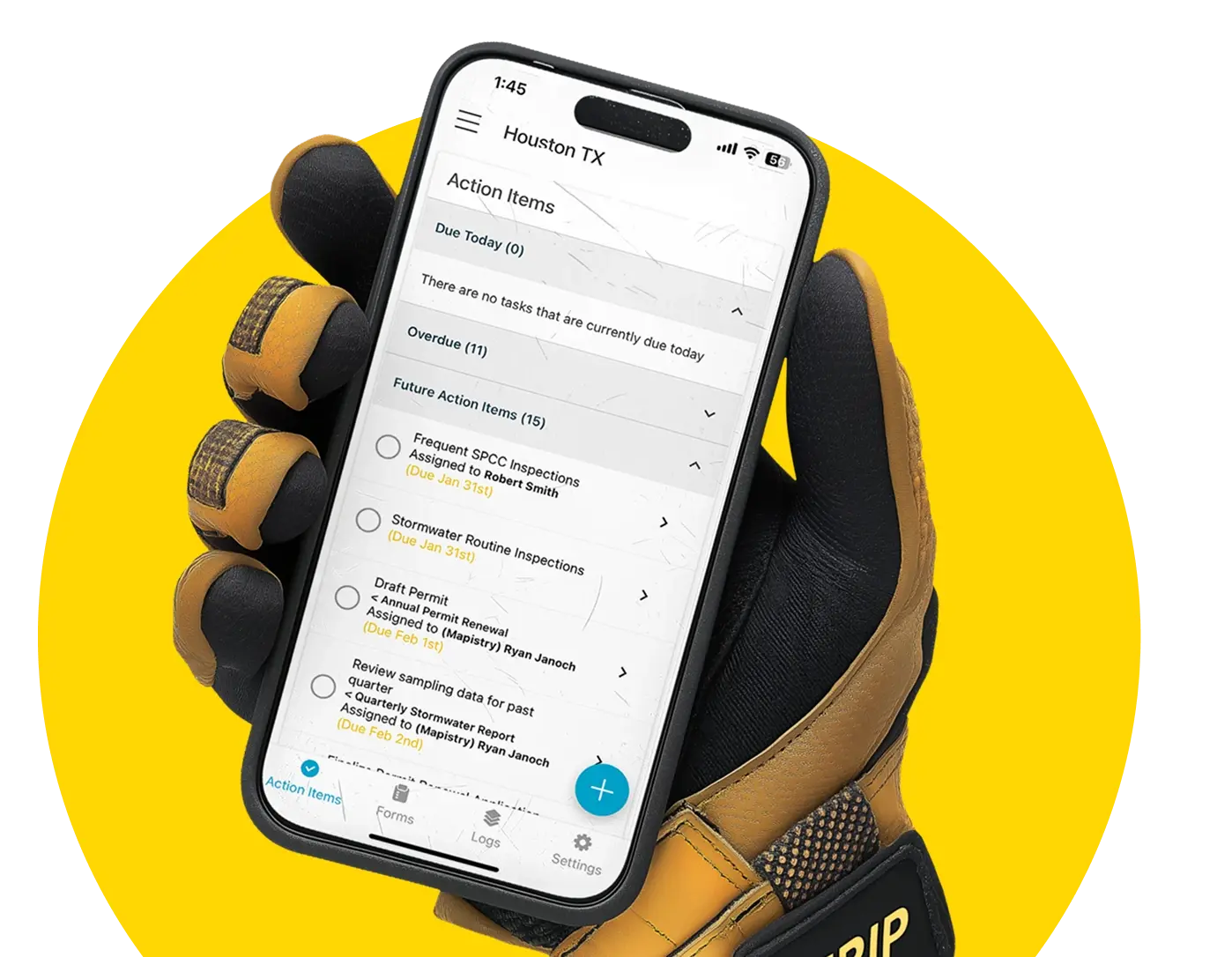Explaining the Drastic Increase in Stormwater Citizen Lawsuits
60-Day Notices of Intent to File Suit (“60-Day Notices”) filed against California facilities increased by 43% between 2015 and 2016 for violations of the Clean Water Act (CWA). There was a 52% increase between 2016 and 2017. How could a handful of environmental groups and law firms have such a rapid increase in productivity? After researching the 60-Day Notices filed by one law firm, Brodsky & Smith, it’s apparent that a streamlined procedure makes filing 60-Day Notices a very scalable business model.
Brodsky & Smith
Brodsky & Smith is a law firm specializing in taking on big business. Their Mergers and Acquisitions branch is investigating the acquisition of Buffalo Wild Wings, Inc. (NASDAQ: BWLD) by Arby’s Restaurant Group.
Their Securities branch is investigating Advance Auto Parts, Inc. (NYSE: AAP) for potential damages to shareholders. Then there’s a smaller, quieter branch of the firm: Environmental Enforcement. Brodsky & Smith’s website describes the Environmental Enforcement team’s purpose as “through citizen suits, our clients seek injunctive relief and penalties from companies that discharge pollutants into the nation’s waterways.”
Brodsky & Smith’s Environmental Enforcement team filed 144 60-Day Notices between 2015 and 2017 in California. More specifically, the firm filed 4 in 2015, 42 in 2016, and 98 in 2017 – a dramatic annual increase!
60-Day Notices
In 1972 Congress passed the original Clean Water Act (CWA), which included Section 505 enabling citizens to file suit against violators of the CWA. Sixty days prior to the initiation of a civil action suit, a citizen must give notice of his or her intent to file suit by sending a 60-Day Notice. The 60-Day Notice intended to establish a method to resolve the polluter’s non-compliance without having to file a formal lawsuit.
However, the 60-Day Notice has become a tool for environmental groups to receive private settlements without the time and effort required of a formal lawsuit. To limit who can file a 60-Day Notice, the legislation requires that a 60-Day Notice be filed by one or more citizens that utilize the waters where the ‘unpermitted’ discharge is occurring. Typically, a non-profit environmental group, such as Coastkeeper or Baykeeper, will conduct an investigation and hire a law firm representing the group’s members to initiate a civil suit.
Alternatively, Brodsky & Smith, a private law firm headquartered in Pennsylvania, circumvents partnering with an environmental group by teaming up with a private citizen residing in the area where the facility is located. The citizen’s information is not publicly available and is redacted from all public documents. According to the US EPA’s Enforcement website, the ‘Burden of Proof’ is different for a civil suit compared to a criminal suit. The civil suit violation does not have to be proven “beyond a reasonable doubt” but rather “if there is a greater than 50 percent chance that the evidence is true.”
The bar is lower for demonstrating violations of the CWA, so a facility’s need to demonstrate compliance is just as important as the Plaintiff’s need to demonstrate violations. The 60-Day Notices typically follow a similar format that describes the facility, the affected citizen(s), the affected receiving waters, and the facility’s violations tracing back 5 years (the federal statute of limitations is 5 years).
A facility’s violations can vary from something as basic as failing to submit a Notice of Intent to Discharge (NOI) to something as complex as repeated pollutant exceedances in stormwater samples. All of this information is publicly available via the California Water Boards Storm Water Multiple Application and Reporting Tracking System (SMARTS) website and the US EPA’s Enforcement and Compliance History Online (ECHO) website.
Simple, Scalable Strategy
By now you’re probably noticing a pattern that the legislation favors the Plaintiff rather than the facility. With a low bar for proof of violations and the publicly available documentation of violations, streamlining the generation of 60-Day Notices becomes relatively simple.
Brodsky & Smiths’ streamlined strategy goes something like this:
- Pick a location
- Team up with a private citizen
- Identify facilities not in compliance
- Download rain data from NOAA to document ‘unpermitted discharge’ violations
- Detail alleged violations in 60-Day Notice
- Send
- Wait 60 days to determine if the facility will settle
Since Brodsky & Smith picks multiple facilities within one location to send 60-Day Notices to, a little investigation goes a long way. The facilities in that location have the same rain events and the same private citizens, so steps 1, 2, and 4 above can be combined. Brodsky & Smith also has a straightforward 60-Day Notice template that only requires the facility-specific information to be changed, as shown in the following excerpt from a Brodsky & Smith 60-Day Notice.
Brodsky & Smith, LLC (“Brodsky Smith”) represents [Citizen], a citizen of the State of California. This letter is to give notice that Brodsky Smith, on [Citizen’s] behalf, intends to file a civil action against [Facility] for violations of the Federal Water Pollution Control Act, 33 U.S.C. § 1251 et seq. (“Clean Water Act” or “CWA”) at [Company’s] facility located at [Facility Address] (the “Facility”).
I describe the template as straightforward because it clearly defines the facility and the facility’s violations.
A few 60-Day Notices are so poorly written that it’s unclear which facility the citizen is filing suit against.
Civil Penalties
At the end of each 60-Day Notice is a section describing how the facility can provide “relief” for the damages the citizen has incurred. The civil penalties for violations of the CWA are federally regulated to be a maximum of $37,500 per day before 11/2/2015 and $51,570 per day after 11/2/2015. Fines are accrued over a 5 year period, where one violation occurs each day at least 0.1 inches of precipitation was recorded at the nearest National Oceanic and Atmospheric Administration (NOAA) weather station.
Fines typically total to around $3M, but in areas with frequent rain events fines can accumulate to as much as $12M+. Aside from fines, the lawsuit also seeks reimbursement of all attorneys’ fees, expert’s fees, and investigative costs. For reference, the Levitt Law Group and Our Clean Waters environmental group seek relief and fines totaling a minimum of $41M in their 60-Day Notices. The majority of civil action suits are settled privately, and since the settlements are confidential, little is known about the amount cases are settled for.
Preventing 60-Day Notices
How can facilities combat these pricy 60-Day Notices? Since the compliance landscape is becoming increasingly complex, I’ve compiled some useful tips below to help you reduce risk and drive compliance.
1. Don’t Be an Easy Target
Prevent the facility from being an easy target for streamlined 60-Day Notices. Facilities that do not file their NOI on time or that do not file their Level 1 or Level 2 reports on time are listed on the Water Board’s website making them easy targets. Figure 2. SMARTS Stormwater Non-Filers Report displaying the late filers for the 2015 permit.
2. Effective Stormwater Management Program
To take it a step beyond that, the facility needs a fully fledged out stormwater management program. That means continuous, daily compliance at the facility. Mapistry believes this is best achieved by training facility staff to implement the stormwater program. That’s why Mapistry provides the training, the software, and the technical expertise for facilities to implement the program themselves. No one is going to be better at keeping up good housekeeping, checking BMPs, and completing monthly inspections than a trained staff on site each day.
3. Keep a Rain Log
One way that Mapistry software prevents 60-Day Notices is through an automated rain log. Facility staff can document in the rain log whether there was actually a stormwater discharge on site. This takes precedence over the NOAA weather station data documenting “unpermitted discharges” listed in a 60-Day Notice and can significantly reduce the number of violations listed in a 60-Day Notice.
4. Show You’re Improving
It’s important to remember that continuously sitting in Level 2 status does not keep a facility safe from 60-Day Notices. Environmental groups do not like seeing repeated stormwater sample exceedances showing no improvement over time, especially when the facility discharges into sensitive receiving waters.
The facility may not be in violation of the Industrial General Permit, but the environmental group can still argue the facility is in violation of the Clean Water Act.
Final Thoughts
In summary, most of the information required to file a 60-Day Notice against a facility in California is publicly available via the SMARTS website.
With the legislation favorable to the Plaintiff and the publicly available documentation of facility violations, filing 60-Day Notices becomes simple, scalable, and profitable. Protect your facility by staying informed on Industrial General Permit requirements and deadlines and effectively implementing your stormwater management program. Mapistry is the complete stormwater management solution for preventing 60-Day Notices. Mapistry’s software provides everything a facility needs to stay in compliance.
Mapistry’s services team works with facilities to train staff and provide on-call stormwater expertise. Mapistry’s legal intelligence group and legal partners provide top-notch litigation prevention and defense.


%201%20(2).png)

